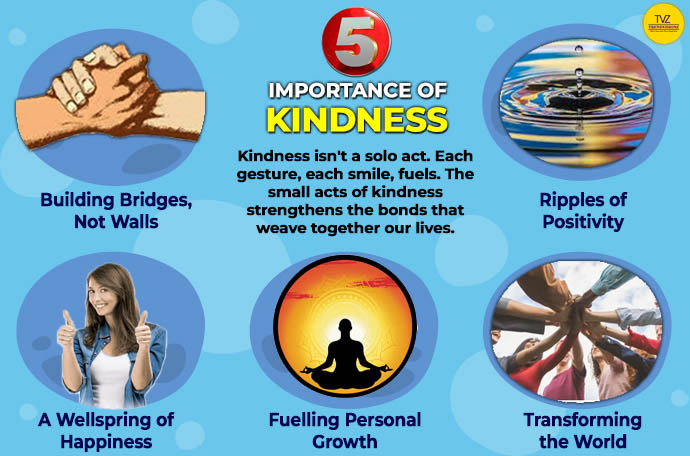You’ve been running on empty for way too long. You’re burnt out between work, family, and the million errands that fill your calendar. Exhausted even after catching some shut-eye? Sleep is vital, but it’s just one piece of the 7 Types of Rest puzzle identified by Dr. Saundra Dalton-Smith. Sleep and rest are essential for rejuvenating the body and mind. The needed rest go beyond physical recovery and encompass your entire well-being.
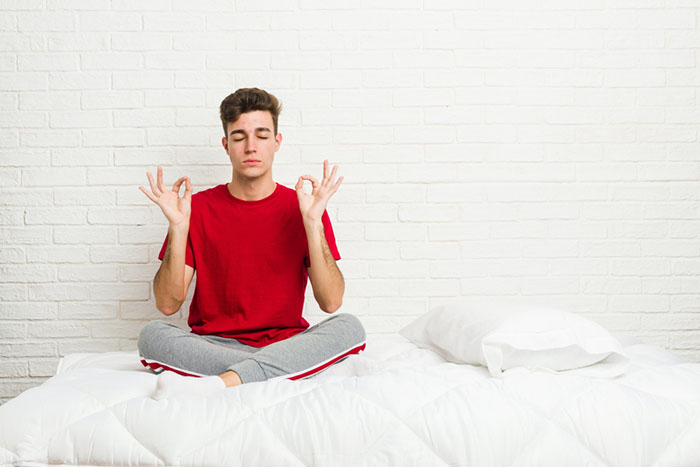
This guide delves into each type of rest, be it emotional rest /mental rest. Each offering practical ways to incorporate them into your life. Dr Saundra Dalton Smith 7 types of rest is ground-breaking research. It helps us discover how to rest effectively and unlock a path to feeling truly recharged and refocused. Imagine reimagining your approach to rest and waking up to a happier, healthier you.
In this complete guide, We’ll walk you through what each type of rest means and how to get ready to hit the ‘snooze’ button on autopilot mode and develop a custom rest routine that works with your lifestyle!
Also Read:
- Empowered Women: Be Informed and Take Charge of Your Health
- Secrets & Symbolism: Demystifying Traditional Indian Jewelry
- Top Agritech Startups Fueling Agriculture Growth in India
Beyond Sleep: Unveiling the 7 Types of Rest for a Fulfilling Life
Ever wondered why you need a rest for your health and productivity? At most times we crawl out of bed feeling more drained than rested. Many people mistakenly equate importance of sleep with complete rest, neglecting the different types of rest crucial for overall well-being. Dr. Saundra Dalton-Smith, a leading expert in stress management, identified these 7 Types of Rest in her book “Sacred Rest: Recover Your Life, Renew Your Energy, Restore Your Sanity.”
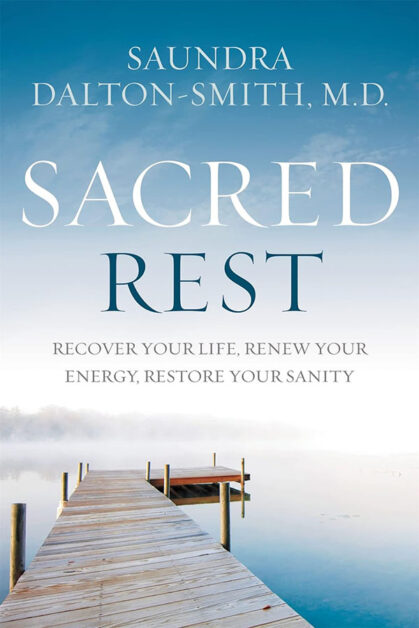
The leading stress management expert observed that while many people focus on getting enough sleep. They often neglect sleep and rest that are equally vital for overall health and well-being.
Dr. Dalton-Smith’s 7 types of rest
- Physical Rest: This includes sleep and rest from physical exertion, allowing the body to repair and rejuvenate itself.
- Mental Rest: Giving the mind a break from constant stimulation, such as work or technology, to prevent mental fatigue.
- Emotional Rest: Taking time to process and release emotions, reducing stress and improving emotional resilience.
- Social Rest: Stepping away from social interactions to recharge and prevent social burnout.
- Sensory Rest: Giving the senses a break from stimuli like noise, light, and crowds, promoting relaxation and reducing sensory overload.
- Creative Rest: Allowing the mind to rest from creative work, fostering inspiration and preventing creative burnout.
- Spiritual Rest: Nurturing the soul and finding meaning and purpose in life, leading to a more profound sense of fulfilment.
The concept originated from Dr. Dalton-Smith’s experience of feeling perpetually exhausted despite seemingly getting enough sleep. She realized that rest wasn’t just about physical rejuvenation; it encompassed a broader spectrum of needs. Through research and self-exploration, she identified the needed rest.
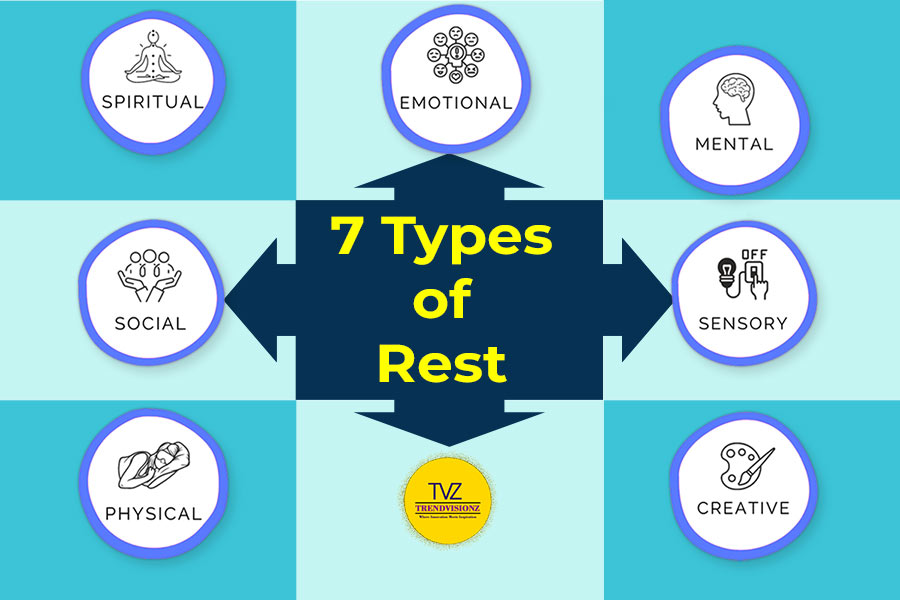
Understanding these types of rest is vital to unlocking a life brimming with energy, focus, and resilience. Imagine a world where you feel physically rested, mentally sharp, emotionally balanced, and creatively inspired. This guide delves into the 7 ways to rest. Explaining how to rest, significance and offering practical tips to integrate them into your daily life.
Physical Rest: Recharge Your Body
Physical rest is essential for replenishing your body and mind. It encompasses sleep as well as gentle movement like yoga or walking. Getting adequate physical rest will boost your energy levels, strengthen your immune system, and promote an overall sense of well-being.
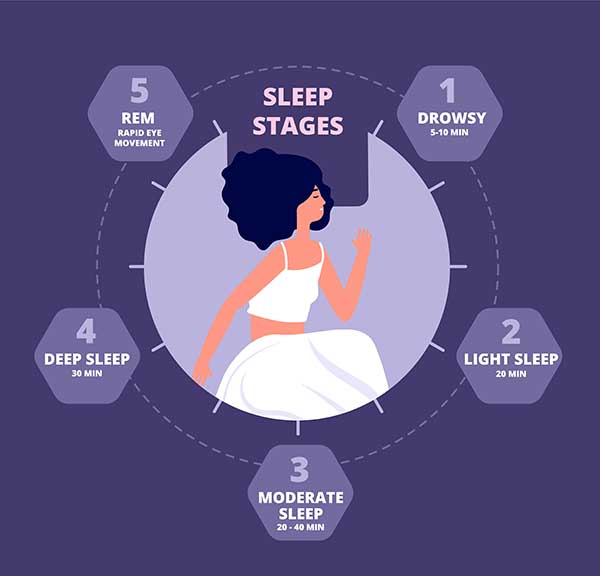
The Importance of Sleep
You need to sleep for the well-being of your mind and body. To feel well-rested, aim for 7 to 9 hours of sleep each night. Lack of sleep can negatively impact your mood, concentration, and performance. It may also increase the risk of health issues like obesity, diabetes, and heart disease over time.
Active Rest: Move Your Body
While sleep is crucial, gentle exercise provides benefits as well. Active rest involves low-intensity activities like walking or stretching, helping maintain fitness momentum and aiding muscle recovery.
Active rest examples include yoga, tai chi, walking, swimming, cycling, and stretching exercises. They increase blood flow to your muscles without taxing your body. Just 30 minutes a few times a week can help reduce stress and anxiety, improve flexibility and balance, and boost your mood.
Also Read:
Warning Signs of Physical Rest Deficit
Some signs that you need more physical rest include:
- Feeling irritable or moody
- Difficulty concentrating or impaired memory
- Weakened immunity (frequent colds or illnesses)
- Weight gain or loss of muscle mass
- Low energy or fatigue
- Insomnia or excessive sleepiness
Tips to Improve Your Physical Rest
Here are some tips to prioritize your physical rest:
- Stick to a consistent sleep schedule, even on weekends. Every day, go to bed and wake up at the same hour.
- Practice relaxation techniques before bed, like meditation, deep breathing, or a warm bath.
- Limit screen time, caffeine, and exercise in the evening. They can disrupt your sleep.
- Do some light exercise like walking or yoga during the day. Therefore, avoid doing intense activity shortly before bed.
- See a doctor if you have an underlying health condition affecting your rest, like sleep apnea or insomnia. Treatment can help you establish a better rest routine.
- Disconnect from technology and do an enjoyable activity before bed, like reading or journaling.
- For the ideal sleeping environment, make your bedroom as dark as you can. If required, wear an eye mask or blackout curtains.
With the proper focus on sleep, movement, and self-care, you’ll be recharged and re-energized in no time. Sweet dreams!
Mental Rest: Calm Your Mind
Your mind constantly processes information, analyses situations, and churns out thoughts. While this type of mental activity is essential for problem-solving and decision-making. It can also lead to feeling overwhelmed, anxious, and unable to focus. Giving your mind a break from this incessant trigger and conversation is necessary for mental relaxation.
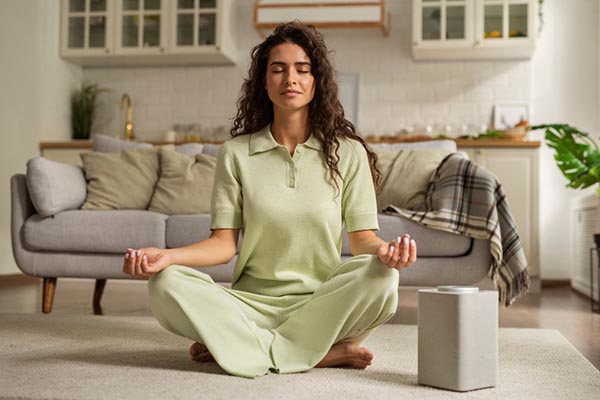
Unplug and unwind.
Make time each day to unplug from technology and unwind. Try meditating, spending time in nature, reading a book, or engaging in a hobby like yoga or gardening. These types of low-key, unstructured activities calm your mind and reduce rumination. Even taking short breaks to focus on your breathing can help shift your mind from “doing” mode to a restful state.
Limit multitasking.
While you may feel productive multitasking, it fatigues your mind by splitting your attention and willpower. To enhance your mental well-being, cultivate the habit of focusing on one thing at a time. When you’re eating, eat. When spending time with loved ones, be fully present with them. Minimize distractions like phones and laptops. Your mental health will thank you for the break from constant task-switching.
Reflect on what’s meaningful.
It’s easy to get caught up in day-to-day stresses and lose sight of the bigger picture. Take time to reflect on the meaningful life. Appreciate your values, relationships, and long-term goals. This contemplation reframes your growth mindset and allows you to reconnect with your purpose and motivation. You’ll feel less frazzled and more at peace.
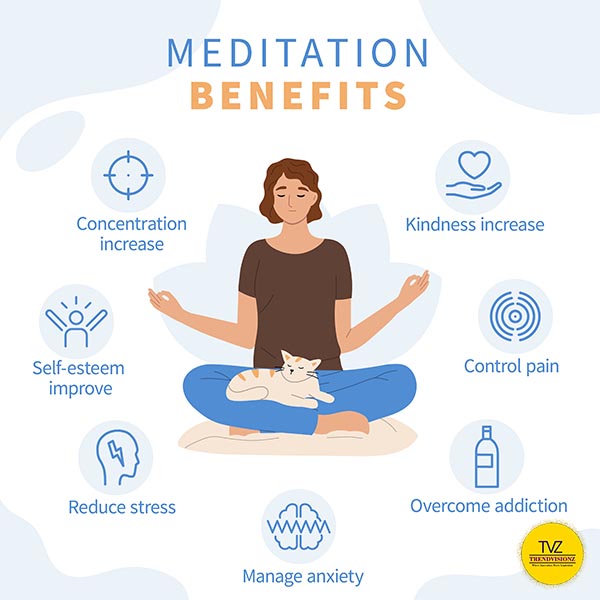
Giving your mind opportunities to rest results in improved focus and concentration, reduced anxiety and worry, and an increased ability to think creatively and flexibly. Prioritize mental rest for a calmer, clearer mind and enhanced mental well-being.
Sensory Rest: Unplug and Decompress
Our senses are constantly bombarded with stimulation in this fast-paced, tech-driven world. While some stimulation is energizing, too much for too long can lead to sensory overload, leaving you feeling frazzled and drained. Sensory rest means consciously limiting excess stimulation by reducing screen time, noise, clutter and bright lights.
Minimize Distractions
To give your senses a break:
- Try turning off all electronics for some time each day.
- Put your phone on “do not disturb” mode, turn off the TV and computers and unplug from the digital world. The silence will be rejuvenating.
- Try noise-cancelling headphones to block out loud noises if complete quiet isn’t possible.
Create a Calming Space
A space in your home free from clutter, bright lights and loud noises provides a sanctuary for your senses. Make your bedroom an electronics-free zone for sleeping, and minimize decor that creates visual chaos.

Use soft lighting, natural materials and neutral, muted colours that evoke feelings of calm. Having a space to retreat to when you’re feeling overstimulated will help you recharge.
Engage Your Senses Gently
Sensory rest examples include activities that engages your senses gently and pleasantly. Such as taking a warm bath with essential oils, gardening, cooking a meal, or going for a walk outside.
Focus on the feel of the water, soil or fresh air, the scents, the textures and the sounds. Slow down and be fully present in the experience. Activities like yoga, meditation, massage therapy or acupuncture can also help relax your senses.
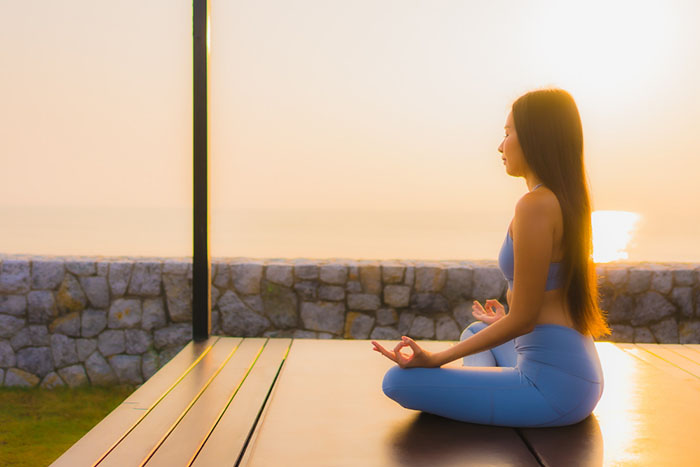
Making time for sensory rest may require effort, but it is essential for your health, focus and relationships. Prioritizing a less stimulated environment and lifestyle can help prevent feelings of stress and burnout and allow you to appreciate the simple pleasures in life again. You well-being will appreciate this respite.
Social Rest: Nurture Your Relationships
Social rest encompasses nurturing connections, setting boundaries, finding like-minded individuals, and helping others, all vital for a fulfilling life.
Connection Matters
Social connections are vital for our well-being. Make time to nurture your close relationships by scheduling quality time with loved ones. Call a friend you haven’t spoken to or plan a get-together with family. Social solid ties provide emotional support and a sense of belonging, helping combat feelings of isolation or loneliness.
Set Boundaries
While social interaction is significant, setting boundaries is essential to avoid burnout. Learn to say no when you need to limit social engagements to recharge. Communicate your needs to others, and don’t feel guilty about taking time for yourself. A balanced approach to social interaction ensures you can give your best self to the relationships that truly matter.
Find Your Tribe
Spend time more with those who share your beliefs and interests. And these people should be in your immediate vicinity. Join a local club or take up a hobby to connect with like-minded individuals. Having a solid support system of people who appreciate you for who you are can help boost your well-being and life satisfaction. However, be cautious of social circles that require constant comparison or validation-seeking. Mutual respect and understanding are the cornerstones of the healthiest partnerships.
Help Others
Helping people in your local community is a great way to gain perspective and boost your well-being. Contribute your talents or efforts to a worthy cause. Assisting others gets your mind off your worries and promotes feelings of purpose and self-worth.
Small acts of kindness, like donating to a food bank or helping an elderly neighbour with chores, can help cultivate social rest. Building healthy relationships and social connections leads to a healthier life. Make social rest a priority and reap the benefits of nurturing relationships.
Spiritual Rest: Connect with “Purpose of Life”
Do you ever feel a longing for a connection to something greater than yourself? Spiritual rest involves nurturing your relationship with whatever gives your life meaning—nature, religion, community service, or creative pursuits.
Spiritual health blossoms when you harmonize with life, finding solace and optimism in adversity. It’s a guiding light, accompanying you through life’s entirety, a deeply personal journey of resilience and renewal, unique to each soul.
How to Find Purpose of Life
Reflect on what motivates or inspires you. What causes do you care about? What values guide you? Connecting to your purpose can provide a sense of direction and meaning.

Finding purpose in life involves introspection and exploration. Reflect on your values, interests, and strengths. Experiment with new experiences and challenges. Engage in activities that bring meaning and fulfilment. Seek connections with others and contribute to something greater than yourself. Embrace the journey of self-discovery and growth.
Spend Time in Nature
Go for a leisurely walk outside and take in the scenery. Sit under a tree and feel the ground beneath you. Nature can put things in perspective and remind us of life’s simple pleasures.
Nature can serve as “a conduit to the sacred, just like traditional religious congregations
Todd W. Ferguson, Baylor’s College of Arts & Sciences
Explore Meditation or Prayer
Meditation and prayer are ancient practices for spiritual nourishment. Just a few minutes daily, focusing on your breath or connecting with your higher power. It can have profound effect on your growth mindset and cultivate inner peace. Start with 5 or 10 minutes and expand gradually for enhanced spiritual health.
Volunteer Your Time
Giving back to your community is a great way to reconnect with your spiritual purpose. Find an organization that matches your values and volunteer your time or skills. Helping others gets your mind off everyday worries and boosts feelings of meaning and connection.
Spiritual rest is all about nurturing your connection to something greater than yourself. It provides a sense of purpose and meaning that transcends the mundane details of everyday life. Make the time for regular practices for spiritual health. You’ll experience greater inner peace and fulfilment.
Emotional Rest: Make Space for Your Feelings
Feeling overwhelmed with your emotions? It’s time for emotional rest. Creating space to acknowledge and process your feelings without judgment is emotional rest.
Acknowledge Your Emotions
It’s easy to push aside your feelings in the rush of everyday life, but that only intensifies them. Make time in your daily schedule to reflect on yourself. How are you feeling? Sad, anxious, joyful, frustrated? Name the emotions you’re experiencing without criticism.

Find Healthy Expression
Once you’ve identified your feelings, find ways to express them constructively. Call a friend, journal your feelings, and do light exercises like yoga or walking. Expressing emotions authentically and openly is critical to emotional health. If you’re struggling, consider speaking to a therapist. They can offer guidance on emotional health.
Be Gentle With Yourself
Emotional rest also means practicing self-compassion. Speak to yourself with kindness and empathy. You’re doing your best, so avoid harsh self-judgment when feelings arise. Reassure yourself that all emotions are normal, and this shall pass. With patience and understanding, you can work through challenging feelings.

Emotional rest is a vital part of well-being. When emotions build up inside, they can manifest as irritability, insomnia, stomach issues and more. Make space for your feelings each day with emotional check-ins, healthy expression of emotions, and self-compassion. Your physical and emotional well-being will appreciate it.
Creative Rest: Spark Inspiration
Creativity is an essential part of the human experience. It allows us to solve problems in new ways, express ourselves authentically, and find joy in the world around us. However, our fast-paced lives often leave us feeling burnt out and lacking inspiration. Have you ever wondered if true Love can act as a shield against relationship disconnect? This is where creative rest comes in.
Creative rest isn’t about forcing yourself to be productive. It’s about giving your mind the space to wander freely and recharge its creative batteries. Engaging in activities that stimulate your senses and spark curiosity can cultivate a fertile ground for new ideas to blossom.

Activities for Creative Rest
Here are some ways to nurture and renew your creative spirit:
- Embrace the New: Step outside your comfort zone and try new things. Take a class on something you’ve always been curious about, visit a museum you’ve never visited, or explore a different part of town. New experiences expose you to other perspectives and can spark unexpected creative connections.
- Embrace Play: Let go of the pressure to be productive and reconnect with the joy of play. Engage in activities that bring lightheartedness and amusement, like coloring, dancing, or playing a musical instrument. Play allows you to experiment, explore, and rediscover your inner creativity.
- Feed Your Senses: Immerse yourself in stimulating environments that engage your senses. Visit an art gallery, listen to music by a new composer, or spend time in nature. Observing beauty and appreciating the world around you can spark your imagination and inspire new creative directions.
Signs of Creative Stagnation
Are you feeling stuck in a rut? Here are some signs you might need to prioritize creative rest:
- Lack of Inspiration: You need help to come up with new ideas, and your work feels stale and inspired.
- Creative Block: You feel stuck and need help moving your creative projects forward.
- Fear of Failure: The fear of producing something terrible or being judged prevents you from taking creative risks.
Rekindle Your Creativity
By incorporating creative rest into your routine, you can break free from creative stagnation and rediscover your passion. Schedule unstructured time for exploration, trying new things, and disconnecting from your routine. Remember, creativity thrives on curiosity, playfulness, and a willingness to experiment. Take a break, recharge your creative spirit, and watch your ideas come alive!
Self-Assessment Tools: Tune into Your Rest Needs
While the descriptions in this guide can help you identify areas where you might need more rest, having some self-assessment tools to personalize your approach is valuable. Here are some resources to delve deeper:
Online Quizzes:
Dr Saundra Dalton-Smith’s Rest Quiz: This comprehensive quiz assesses your current levels of all seven types of rest and provides personalized recommendations for improvement.
Journaling Prompts:
- Reflect on your daily routine. How much time do you dedicate to sleep, relaxation, hobbies, and social interaction? Are there areas where you feel constantly depleted?
- Consider your overall well-being. Do you experience frequent headaches, fatigue, or difficulty concentrating? How is your mood?
- After engaging in an activity, ask yourself: How does this make me feel? Does it leave me feeling energized or drained?
Create Your Checklist:
- Design a checklist tailored to your needs. List the seven types of rest and create a scoring system to reflect how well you’re fulfilling each one each day. Reward yourself for your small task you do. For instance, for exercising, getting enough sleep, and using relaxation techniques to unwind physically.

Track Your Progress:
- Monitor your progress over time. As you incorporate more rest into your life, do you notice a difference in your energy levels, mood, and overall well-being?
Using these self-assessment tools, you can gain valuable insights into your rest need for 7 types of rest. Tailor your routine to promote a life filled with energy, focus, and fulfilment. Remember, rest is not a luxury; it’s a necessity for optimal health and wellbeing. So prioritize rest, experiment with different techniques, and watch your life flourish!
Also Read:
- Structure of the Bell: Demystifying Echoes of Divine Resonance
- What Do Bells Symbolize Spiritually? Unveiling the Divine Resonance
- 10 Japanese Concepts for Balanced Life: Harmonizing Tradition and Modernity
- The 9 Avatars of Durga: Practical Lessons In Mindfulness
FAQs: 7 Types of Rest
How much rest do I need?
The amount of rest each person needs varies and depends on factors like activity level, health conditions, and life demands. As a general rule of thumb, aim for 7 to 9 hours of sleep per night, take short breaks every 90 minutes during the day, and set aside time each week for other types of rest like social, creative and spiritual. The key is to listen to your body and mind.
What is well-being?
Wellbeing encompasses physical, mental, emotional, and social health, beyond the absence of illness. It is closely tied to happiness and life satisfaction, reflecting a holistic view of one’s overall health and quality of life.
Which types of rest should I focus on first?
Start with the basics: prioritize physical rest by establishing a good sleep schedule and routine. Then, work on mental rest by scheduling short breaks to unwind and de-stress. Sensory rest is also essential, so avoid excess noise and clutter in your environment. Once you have a good foundation with these three types of rest, you can explore the others at your own pace.
How do I make time for rest when I have a busy schedule?
The only way to truly make time for rest is to prioritize it. Look at your schedule and commitments and determine what’s essential. Then, set boundaries to free up time for the rest you need. You may need to learn to say “no” more often. Making rest a priority will give you more energy and help you be more productive.
Conclusion
7 Types of Rest is essential, but it’s not just about sleep. There are many types of rest to try that support well-being in different ways. Need a rest – physical, mental, sensory, social, spiritual, emotional, and creative. Dr Saundra Dalton Smith 7 types of rest is ground-breaking research to apply them in everyday life. Embrace the inner child for self-growth.
Each type addresses a distinct aspect of wellbeing. Understanding how to rest is critical to a life brimming with energy and focus.
Start tuning into the needed rest. Permit yourself to take that break. Experiment with ways to rest. Build those sleep and rest moments into your days and weeks. Remember to underestimate the power of recharging your mind, body and spirit through rest.
You’ll return to your responsibilities refreshed, re-entered and re-energized. Prioritize rest, experiment with techniques, and watch your energy and wellbeing soar. You deserve it!
Share your Review
Our Digital Imprints
About the Author: Anuj Mahajan is a Mass Communication Specialist, ICF Certified Coach & Corporate Trainer. Motivational Speaker / NLP Lifecoach. With expertise spanning filmmaking, business coaching, motivational speaking, blog writing, and authoring, he embodies versatility and mastery across diverse fields.
Chief Operating Officer: Nuteq Entertainment Pvt Ltd, and Co-Founder: Trendvisionz – A Premier Digital Marketing Agency in India
Get Connected to us with our Newsletters- Transforming Lives… Creating the magic. Just – Believe ~ Practice ~ Perform BizTech Chronicle… Navigating Tomorrow’s Tech Frontiers 🚀
Join my LinkedIn Group: Digital Marketing, Content Creation World Group
Follow me on Twitter or LinkedIn. Check out my website.




